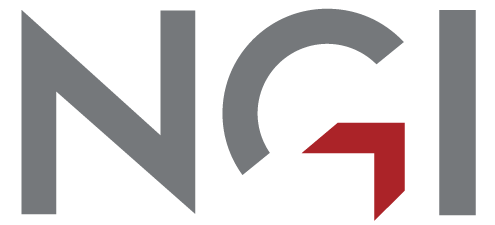Press release -
Are we recycling contaminants in a circular economy?
Sarah Hale, NGI, has installed a passive sampler to measure air contamination at a recycling facility for metal and car wrecks.(Photo: NGI)
Recycling is increasingly the preferred option for waste handling. Recycling is widely found to reduce the need for raw materials and to release fewer greenhouse gases, compared to incineration and landfilling.
However, much of today’s waste contains chemicals that are toxic to humans and the environment, including bisphenol A, heavy metals, antimony, PCBs and brominated flame retardants. What does one do with such contaminated waste? Is recycling always the best method, or are we recycling the toxins?
To address the issue the research project WASTEFFECT investigated what happens to hazardous chemicals in waste in Norway as it is being landfilled, incinerated or recycled. A particular focus was how much contaminants are released into air and water at these different types of facilities.
WASTEFFECT is a project funded by the Research Council of Norway, and was led by The Norwegian Geotechnical Institute (NGI) in collaboration with the Norwegian University of Life Sciences (NMBU), the Norwegian Institute for Air Research (NILU), Umeå University in Sweden, and the University of Toronto, Canada.
From a study of several waste-handling facilities in Norway, WASTEFFECT researchers confirmed that landfilling was by far the worst option in terms of contaminant emissions into the surrounding air and water. Leachate from landfills can be rich in environmental contaminants, many of which can be transported by microplastics.
Incineration was associated with the lowest emissions of contaminants into both air and water. Recycling was deemed to emit more contaminants than incineration. These findings were indeed partly attributable to the good infrastructure and regulations regarding how waste is incinerated in Norway, typically in state-of-the-art waste-to-energy plants. For particularly contaminated waste, incineration would be a favorable alternative to recycling.
Circular economy
Recent policy initiatives are seeking to adopt a circular economy, where waste is regarded as a resource. Current legislation in Norway and the EU is aiming towards less incineration and more recycling, particularly in the handling of vehicles and waste electrical and electronic equipment (WEEE).
Some waste, however, does not conform to EU regulations for being a resource, for instance, if it contains contaminants that are banned from use. These contaminants pose an exposure risk, through air and water emissions, as the waste is being handled, as well as through direct contact with consumers if it is converted to a recycled product.
Sorting out hazardous material
To acquire the best benefits from incineration and recycling, WASTEFFECT researchers recommend implementing and identifying smarter sorting strategies:
“One such practice in use today is the further development of sensors to differentiate between waste with high and low contaminant content, but we need to develop also low-technology solutions” explains Dr Hans Peter Arp, senior engineer at NGI and project manager for WASTEEFFECT.
He would like to see more emphasis on the role of contaminants in discussions concerning waste handling.He thinks strategies and technologies to analyze and differentiate different types of waste will become increasingly important in the future.
These issues present many challenges of practical and economical nature.Some of these will be discussed at a workshop in Oslo on Tuesday 26 January, held by NGI and marking the closing of WASTEEFFECT.The participants are researchers, government institutions and representatives from the waste handling sector.
One potential strategy, up for discussion, is sorting vehicles and WEEE by the approximate year of make, as older vehicles and WEEE tends to be more contaminated, according to Hans Peter Arp, who explains:
“Other economically favorable strategies could also result from closer collaboration between the plastic recycling industry and waste-sorting industry to work together in sorting plastics low in hazardous chemicals and therefore higher in value.”
For more information:
Hans Peter Arp tel +47950 20 667 hans.peter.arp@ngi.no
Topics
- Environment, Energy
Categories
- pcb
- antimony
- waste handling
- emissions
- contaminants
- hazardous materials
- recycling
The Norwegian Geotechnical Institute (NGI) is a leading international centre for research and consulting within the geosciences. NGI develops optimum solutions for society, and offers expertise on the behaviour of soil, rock and snow and their interaction with the natural and built environment.
NGI works within the markets Offshore energy; Building, construction and transportation; Natural hazards, and Environmental Engineering.
NGI is a private foundation with office and laboratory in Oslo, branch office in Trondheim, and daughter companies in Houston, Texas, USA, and Perth, Western Australia. NGI was established in 1953.
